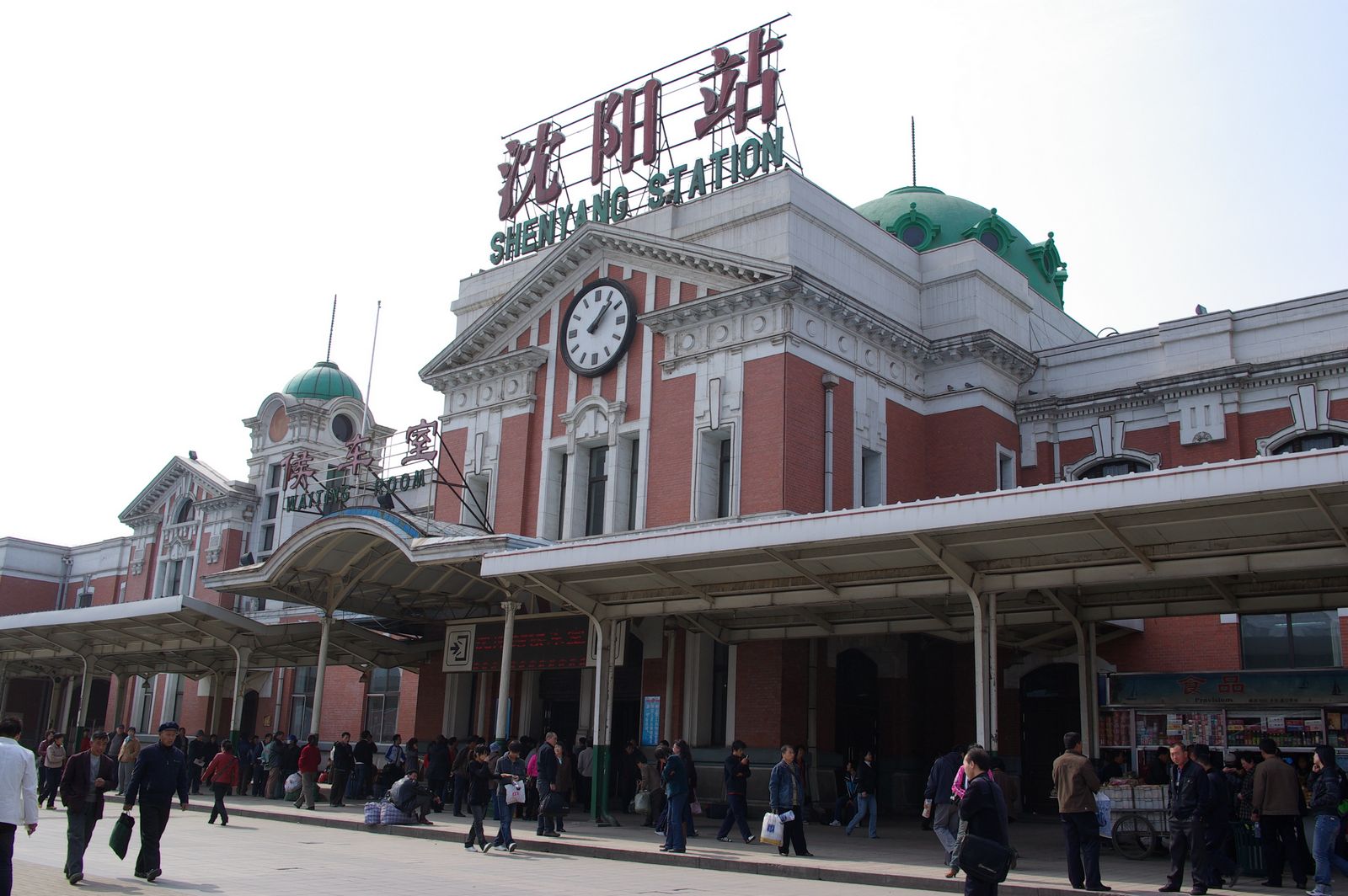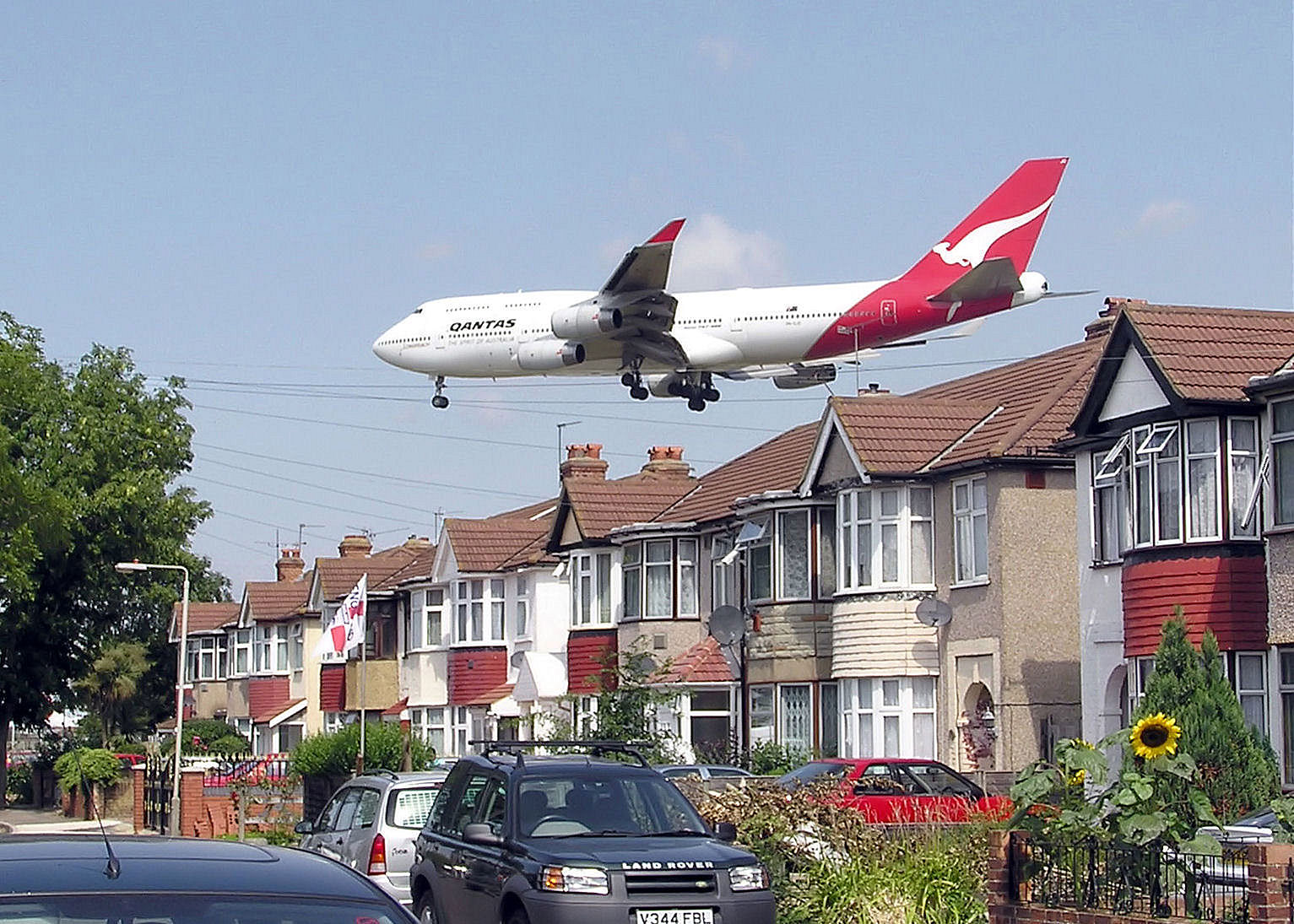|
Beijing–Shenyang High-speed Railway
Beijing–Shenyang high-speed railway is a -long high-speed rail line of the China Railway High-speed between Beijing and Shenyang, the capital of Liaoning province. It is a section of the Beijing–Harbin high-speed railway. The line was intended to relieve a significant bottleneck in China's transportation network between the Northeast region and Beijing. The route runs to the north and inland of the existing routes which hug the coast around the Bohai sea. The new line leaves Beijing heading northeast to Chengde in Hebei province then turn east through Chaoyang, and Fuxin in Liaoning province, on route to Shenyang. There are 16 stations, which were the last section of the Beijing–Harbin high-speed railway to be completed; the other sections of that line had been operational since December 1, 2012. The line has a maximum design speed of though regular services operate at around . Travel time between Shenyang and Beijing was cut from the former 4 hours to just 2 hours and 17 ... [...More Info...] [...Related Items...] OR: [Wikipedia] [Google] [Baidu] |
Fuxing (train)
Fuxing () (also known as the CR series EMU, or as the Fuxing Hao) is a series of high-speed and higher-speed EMU trains operated by China Railway High-speed (CRH) and developed by CRRC, which owns the independent intellectual property rights. Initially known as the China Standardized EMU, development on the project started in 2012, and the design plan was finished in September 2014. The first EMU rolled off the production line on 30 June 2015. The series received its current designation of Fuxing in June 2017, with nicknames such as "Blue/Red Dolphin" (CR400AF) and "Golden Phoenix" (CR400BF) for certain units. It is among the world's fastest conventional high speed trains in regular service, with a operating speed of for the CR400AF and CR400BF models. This train will also operate in Indonesia on the Jakarta-Bandung high-speed railway from 2023, with a derivative version of CR400AF, also known as KCIC400AF or Komodo Merah (literally: red komodo dragon). History Back ... [...More Info...] [...Related Items...] OR: [Wikipedia] [Google] [Baidu] |
Chengde
Chengde, formerly known as Jehol and Rehe, is a prefecture-level city in Hebei province, situated about 225 km northeast of Beijing. It is best known as the site of the Mountain Resort, a vast imperial garden and palace formerly used by the Qing emperors as summer residence. The permanent resident population is approximately 3,473,200 in 2017. History In 1703, Chengde was chosen by the Kangxi Emperor as the location for his summer residence. Constructed throughout the eighteenth century, the Mountain Resort was used by both the Yongzheng and Qianlong emperors. The site is currently an UNESCO World Heritage Site. Since the seat of government followed the emperor, Chengde was a political center of the Chinese empire during these times. The city of Jeholan early romanization of Rehe via the French transcription of the northern suffix ''ér'' as ''eul''reached its height under the Qianlong Emperor 1735-1796 (died 1799). The great Putuo Zongcheng Temple, loosely based on the ... [...More Info...] [...Related Items...] OR: [Wikipedia] [Google] [Baidu] |
Shunyi West Railway Station
Shunyi West railway station () is a railway station of Beijing-Shenyang high-speed railway located in Shunyi District, Beijing } Beijing ( ; ; ), alternatively romanized as Peking ( ), is the capital of the People's Republic of China. It is the center of power and development of the country. Beijing is the world's most populous national capital city, with over 21 ..., China. It was opened on 22 January 2021. References Railway stations in Beijing Stations on the Beijing–Harbin High-Speed Railway Railway stations in China opened in 2021 {{Beijing-railstation-stub ... [...More Info...] [...Related Items...] OR: [Wikipedia] [Google] [Baidu] |
Prefecture-level City
A prefecture-level city () or prefectural city is an administrative division of the People's Republic of China (PRC), ranking below a province and above a county in China's administrative structure. During the Republican era, many of China's prefectural cities were designated as counties as the country's second level division below a province. From 1949 to 1983, the official term was a province-administrated city (Chinese: 省辖市). Prefectural level cities form the second level of the administrative structure (alongside prefectures, leagues and autonomous prefectures). Administrative chiefs (mayors) of prefectural level cities generally have the same rank as a division chief () of a national ministry. Since the 1980s, most former prefectures have been renamed into prefectural level cities. A prefectural level city is a "city" () and "prefecture" () that have been merged into one consolidated and unified jurisdiction. As such it is simultaneously a city, which is a munici ... [...More Info...] [...Related Items...] OR: [Wikipedia] [Google] [Baidu] |
Beijing Railway Station
Beijing railway station (), or simply Beijing station (), is a passenger railway station in Dongcheng District, Beijing. The station is located just southeast of the city centre inside the Second Ring Road with Beijing Station Street to the north and the remnants of the city wall between Chongwenmen and Dongbianmen to the south. The Beijing railway station opened in 1959 and was the largest train station in China at the time. Though superseded by the larger Beijing West and Beijing South stations, this station remains the only one located inside the old walled city. Trains entering and leaving the station pass by the Dongbianmen corner tower. With gilded eaves and soaring clock towers, the architecture of the railway blends traditional Chinese and socialist realist influence. Generally, trains for northeast China ( Shenyang, Dalian, Harbin) on the Beijing–Harbin railway, for Shandong ( Jinan, Qingdao) and the Yangtze River Delta (Shanghai, Nanjing and Hangzhou) on t ... [...More Info...] [...Related Items...] OR: [Wikipedia] [Google] [Baidu] |
Chengde South Railway Station
The Chengde South railway station is a railway station of Jingshen Passenger Railway that located in People's Republic of China China, officially the People's Republic of China (PRC), is a country in East Asia. It is the world's most populous country, with a population exceeding 1.4 billion, slightly ahead of India. China spans the equivalent of five time zones and .... Railway stations in Hebei Stations on the Beijing–Harbin High-Speed Railway Railway stations in China opened in 2018 {{Hebei-railstation-stub ... [...More Info...] [...Related Items...] OR: [Wikipedia] [Google] [Baidu] |
Shenyang Railway Station
Shenyang railway station () is a railway station on the Shenyang–Dalian railway, Shenyang–Dandong railway, Shenyang–Shanhaiguan railway, Huanggutun railway, Shenyang–Fushun intercity railway, Harbin–Dalian high-speed railway and Beijing–Shenyang high-speed railway. It is located in Heping District, Shenyang, Liaoning, China. History Fengtian station () opened in 1899. The new station building was constructed on October 1, 1910. Fengtian station was renamed Shenyang South Station () in 1945 (after Second Sino-Japanese War). Shenyang South Station was renamed Shenyang Station in 1950. See also *Chinese Eastern Railway *South Manchuria Railway *South Manchuria Railway Zone *Shenyang Metro *Shenyang North railway station Shenyangbei (Shenyang North) railway station () is a railway station on several railways: the Harbin–Dalian High-Speed Railway, Harbin–Dalian section of the Beijing–Harbin High-Speed Railway, Jingha Railway, Hada Railway, Qinshen Passen ... [...More Info...] [...Related Items...] OR: [Wikipedia] [Google] [Baidu] |
Chinese Yuan
The renminbi (; symbol: ¥; ISO code: CNY; abbreviation: RMB) is the official currency of the People's Republic of China and one of the world's most traded currencies, ranking as the fifth most traded currency in the world as of April 2022. The yuan ( or ) is the basic unit of the renminbi, but the word is also used to refer to the Chinese currency generally, especially in international contexts. One yuan is divided into 10 jiao (), and the jiao is further subdivided into 10 fen (). The renminbi is issued by the People's Bank of China, the monetary authority of China. Valuation Until 2005, the value of the renminbi was pegged to the US dollar. As China pursued its transition from central planning to a market economy and increased its participation in foreign trade, the renminbi was devalued to increase the competitiveness of Chinese industry. It has previously been claimed that the renminbi's official exchange rate was undervalued by as much as 37.5% against its pur ... [...More Info...] [...Related Items...] OR: [Wikipedia] [Google] [Baidu] |
Chaoyang District, Beijing
Chaoyang District () is a core district of Beijing. It borders the districts of Shunyi to the northeast, Tongzhou to the east and southeast, Daxing to the south, Fengtai to the southwest, Dongcheng, Xicheng and Haidian to the west, and Changping to the northwest. Chaoyang is home to the majority of Beijing's many foreign embassies, the well-known Sanlitun bar street, as well as Beijing's growing central business district. The Olympic Green, built for the 2008 Summer Olympics, is also in Chaoyang. Chaoyang extends west to Chaoyangmen on the eastern 2nd Ring Road, and nearly as far east as the Ximazhuang toll station on the Jingtong Expressway. Within the urban area of Beijing, it occupies , making it the central city's largest district, with Haidian second. As of 2005, Chaoyang had a total population of 3,642,000, making it the most populous district in Beijing. The district has jurisdiction over 22 subdistrict offices and 20 area offices. Chaoyang is also home to ... [...More Info...] [...Related Items...] OR: [Wikipedia] [Google] [Baidu] |
Electro-magnetic Radiation
In physics, electromagnetic radiation (EMR) consists of waves of the electromagnetic (EM) field, which propagate through space and carry momentum and electromagnetic radiant energy. It includes radio waves, microwaves, infrared, (visible) light, ultraviolet, X-rays, and gamma rays. All of these waves form part of the electromagnetic spectrum. Classical electromagnetism, Classically, electromagnetic radiation consists of electromagnetic waves, which are synchronized oscillations of electric field, electric and magnetic fields. Depending on the frequency of oscillation, different wavelengths of electromagnetic spectrum are produced. In a vacuum, electromagnetic waves travel at the speed of light, commonly denoted ''c''. In homogeneous, isotropic media, the oscillations of the two fields are perpendicular to each other and perpendicular to the direction of energy and wave propagation, forming a transverse wave. The position of an electromagnetic wave within the electromagnetic ... [...More Info...] [...Related Items...] OR: [Wikipedia] [Google] [Baidu] |
Noise Pollution
Noise pollution, also known as environmental noise or sound pollution, is the propagation of noise with ranging impacts on the activity of human or animal life, most of them are harmful to a degree. The source of outdoor noise worldwide is mainly caused by machines, transport, and propagation systems.Senate Public Works Committee. ''Noise Pollution and Abatement Act of 1972''. S. Rep. No. 1160, 92nd Congress. 2nd session Poor urban planning may give rise to noise disintegration or pollution, side-by-side industrial and residential buildings can result in noise pollution in the residential areas. Some of the main sources of noise in residential areas include loud music, transportation (traffic, rail, airplanes, etc.), lawn care maintenance, construction, electrical generators, wind turbines, explosions, and people. Documented problems associated with noise in urban environments go back as far as ancient Rome. Research suggests that noise pollution in the United States is the high ... [...More Info...] [...Related Items...] OR: [Wikipedia] [Google] [Baidu] |
CR400BF-GZ-5143 And 5203 At Xidian (20210907085950) (CR4), an upcoming MRT station on the Cross Island Line in Singapore
{{Letter-NumberCombDisambig ...
CR4 may refer to: Science and technology * Complement receptor 4, a complement receptor in the immune system * CR4, a control register in the x86 CPU architecture * 100GBASE-CR4 and 40GBASE-CR4, in 100 Gigabit Ethernet and 40 Gigabit Ethernet Other uses * CR4, four-firm concentration ratio, a measure of market concentration in economics * CR4, a postcode district in the CR postcode area in England * Pasir Ris East MRT station Pasir Ris East MRT station is a future underground Mass Rapid Transit station on the Cross Island MRT line located in Pasir Ris Pasir Ris is a planning area and residential town located in the East Region of Singapore. It is bordered b ... [...More Info...] [...Related Items...] OR: [Wikipedia] [Google] [Baidu] |
.jpg)


.jpg)


.jpg)
